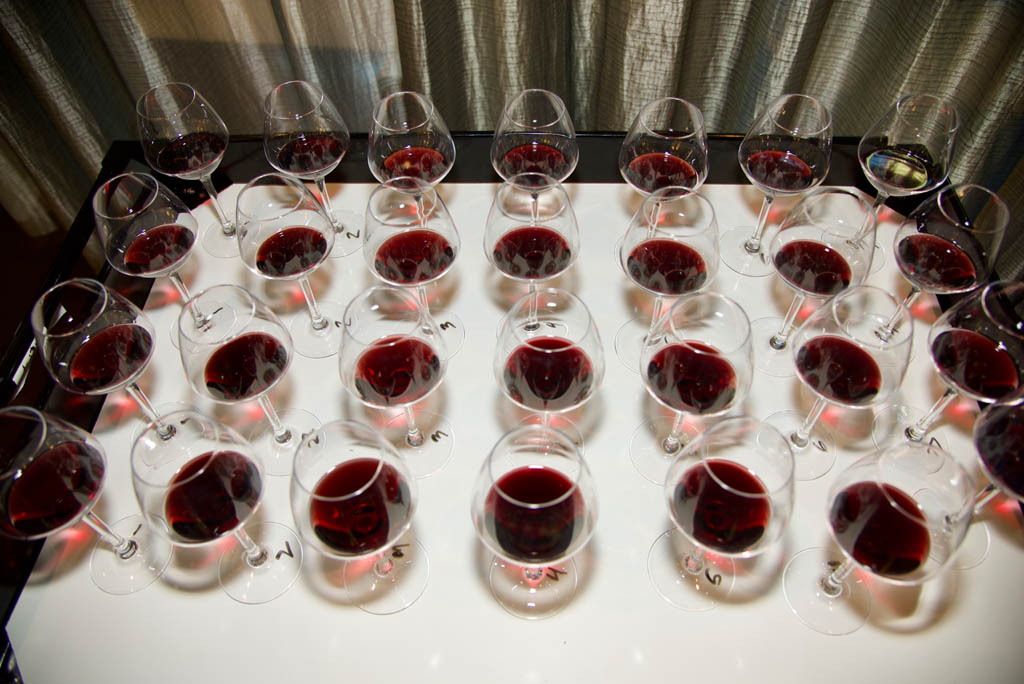
The 16th American Fine Wine Competition / Invitational
Judging and Awarding the Best American Wines
Photos By Brett Hart
One of the most enjoyable experiences I’ve had in the past 10 years writing about food and wine, and as a sommelier was being invited to be one of 28 judges, hand-picked from across the country to spend 3 days at Florida International University’s Chaplin School of Hospitality in Miami to evaluate some 600 wines of vetted quality at the American Fine Wine Competition/Invitational.
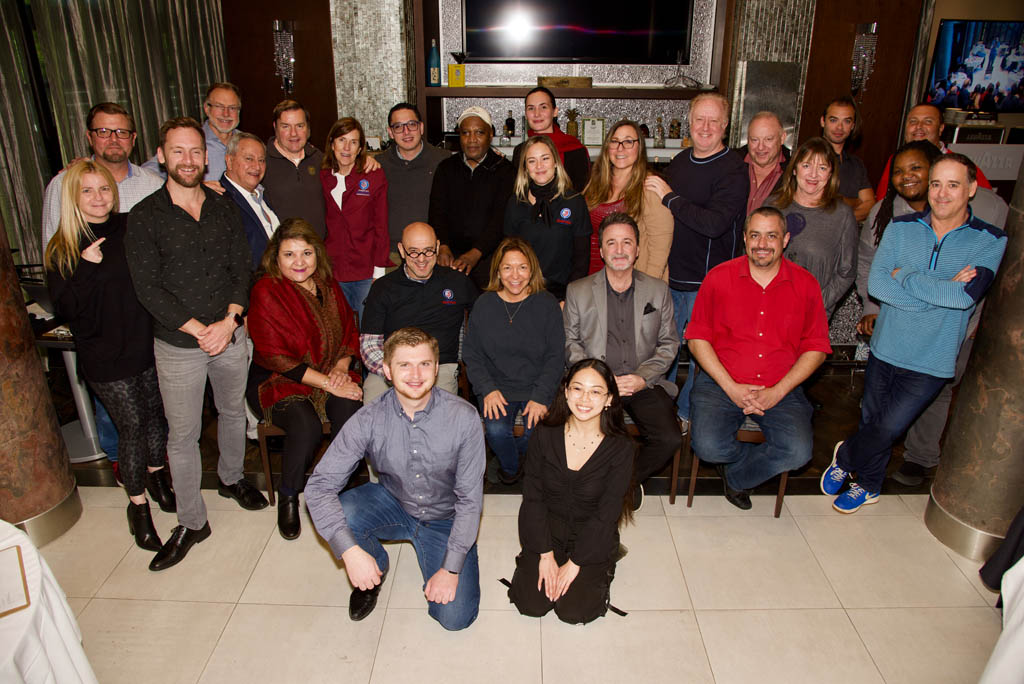
Participating in an event of this level, behind the scenes and as a judge, the first thing I want to share is the following: while it seems very glamorous, it takes a TON of work, dozens of dedicated volunteers, and months of planning to put together this competition, starting with vetting wineries and wines to invite, receiving, organizing, and preparing nearly 100 flights of wine to be evaluated on objective criteria by seasoned professional palates, some of the best in the industry, and to keep track of the results.
Some interesting statistics from the Invitational—Judges traveled from as far away as California, and as nearby as some of the best restaurants and bottle shops in South Florida. FIU student volunteers washed over 4,000 glasses over three days. Only two glasses got sent back to be re-washed, and only two broke the entire time! Judges arrived at 11:30am on Saturday January 14th at FIU in North Miami, ready to start tasting on day 1. A dozen judges evaluated over 20 flights of wine including Albarino, Chardonnay, Pinot Noir, Bordeaux-Style Blends, Sparkling Wine, Merlot, and more, setting the stage for the big day—Sunday. On an unusually brisk Sunday morning (43 degrees), 28 judges arrived at FIU to begin tasting and evaluating hundreds of wines, at 8:30am sharp. The day included a break for lunch, where judges were able to have a half glass of wine they had already judged before getting back to work. One thing to note—people I know were literally high-fiving me for being honored with this invitation. As a judge, I must say it was one of the best experiences of my life. Tasting hundreds of outstanding wines (there were only two that I tasted where my table and I requested a fresh bottle because of some possible flaw) is an incredible opportunity, but not as glamorous as one might think. You have roughly 20 minutes as a panel of typically four, to taste anywhere from 4-7 wines for the initial evaluation, make notes, and come up with your personal score and possible medal for each wine.
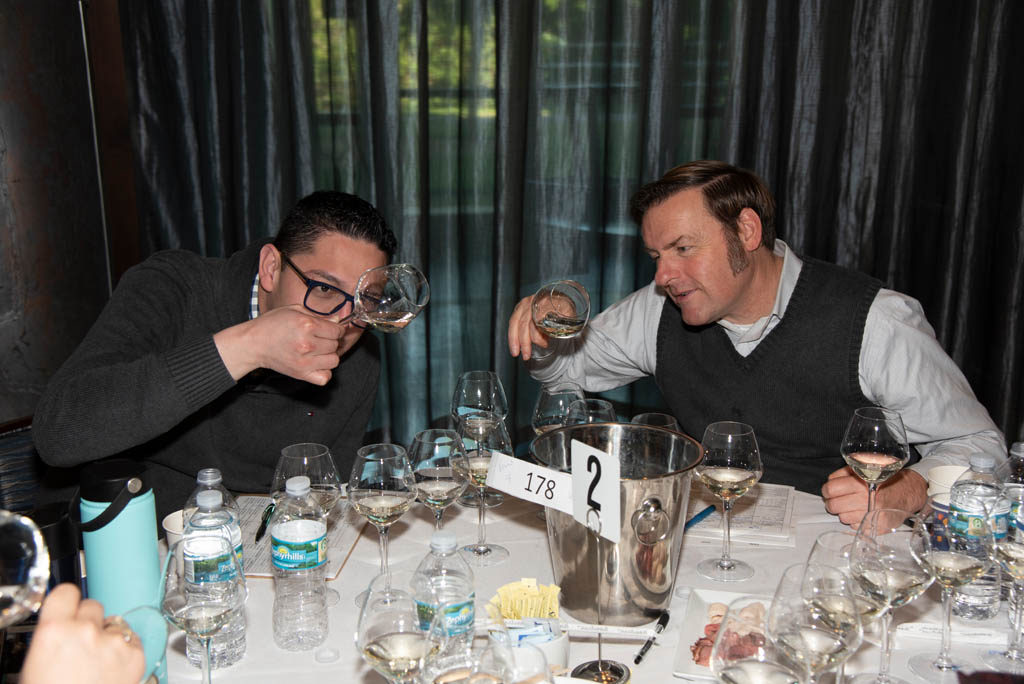
Naturally, we wine judges must keep our wits about us. This isn’t a consumer wine tasting, and even a buzz is not okay. There is an art to being a sommelier and professional and to being able to taste hundreds of wines in a single day without getting inebriated. People naturally asked me how it would be possible to taste hundreds of wines and be able to stay sober AND keep an objective palate throughout the day. As professionals, we are trained to evaluate wines objectively and be able to do so without ingesting (there are spit cups and buckets that need to be used). Judges evaluate wines on everything from nose (aromas) to color, clarity, acidity, and intensity of flavor on the palate, and on how well this wine represents a particular varietal or blend. We take notes on each, and often re-visit to see how a wine might open up after a few minutes, or if we might feel differently after tasting others in a flight, or after clearing the palate. While we did have a few spirited discussions over the course of three days, for the most part, each panel I was part of found all judges at the table within a couple points of one another—often two or more judges coming up with the same score, hence the plethora of Double Gold Medals, in which every judge agrees the wine scored above 90 points. This is possible after years of studying wine, tasting wine, and training your palate. Master Sommeliers, of which there are only several hundred in the world, can literally taste a wine blindly and accurately decipher varietal, region, year, and even down to vineyard block! I was extremely humbled and honored that my palate was consistent with the other professionals, many of whom had judged in many competitions and work as sommeliers or in the wine business on a daily basis.
Options included:
90+ Gold
85-89 Silver
80-84 Bronze
Each judge must evaluate independently, and when all are ready, a captain of each table (which rotates each flight) calls on other team members to share their scores and thoughts. If all four members of the table score a wine as 90 or above (Gold), the wine is awarded a “Double Gold” Medal. This year’s competition saw more Double Gold recipients than in any previous years—I must say that the majority of wines I tasted were worthy of Gold and many did receive Double Gold. Judges are encouraged to give every benefit or possibility to the winery/winemaker. For instance, if your evaluation comes up at a high silver (89’ish) and the rest of the table is 90+ (meaning gold), we want to taste again and if possible to boost our score and tip the wine over into the higher medal category. Also, as a panel, after listening to each other, sometimes we go back and re-visit a wine, possibly adjusting our initial impression based on the findings and reasons presented by the group that a wine be awarded a certain score or medal. After deliberating (like a jury), the group comes to a consensus, even if not all scores are the same. If it is split 2-2 between Gold or Silver, the wine gets a Silver. When a panel of four scores a wine with three judges giving it 90+ (Gold) and one giving it less than 90 and not coming up to Gold, it will receive a Gold Medal by majority vote. If all four judges score it 90+, it gets Double Gold. In the case where one judge who scored a wine high Silver score with the others all 90+ can be convinced to raise their score to 90, the wine will get a Double Gold.
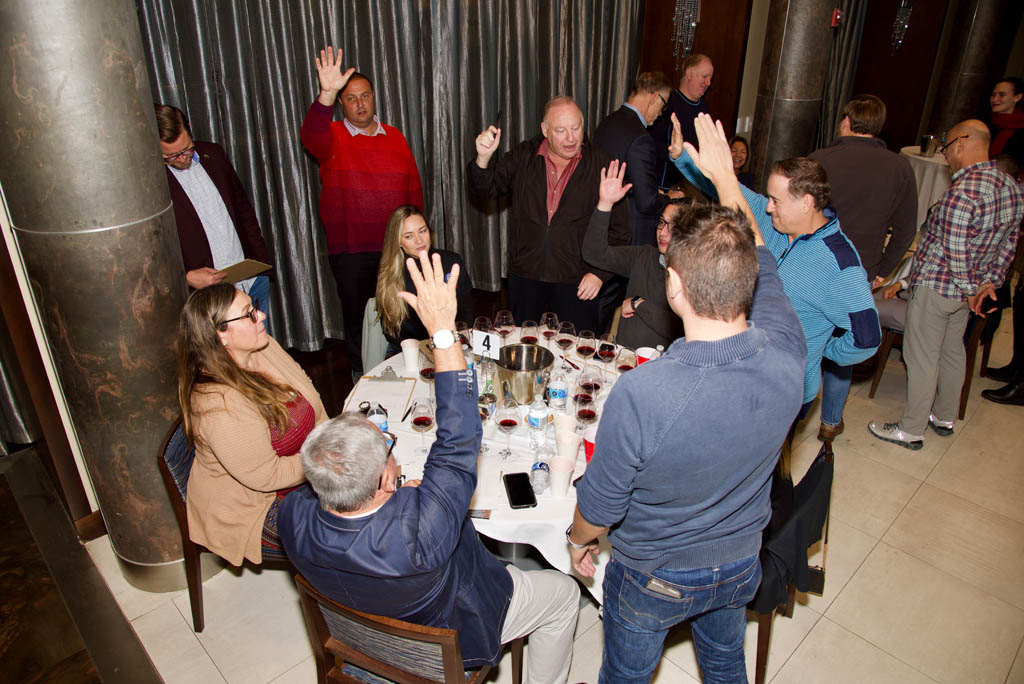
Being this is a competition, judges taste blindly—we do not know what we are drinking, aside from grape varietal, and a rough idea of price points and locations represented within the flight. In order to keep the palate fresh, judges are given water, slices of fresh baguettes, turkey, roast beef, and carrots for the vegetarians to nosh in between wines or flights. Also, after a couple of red flights, tables are often given a white flight or two in order to calm the palate—tasting and judging reds is intense. I was glad that my purple teeth cleaned up right away with just a brushing at the end of each day.
The third and final day—Monday January 16th—Martin Luther King Day, was the “Best of” Show judging. Judges arrived at 9am sharp to start tasting and voting on the winners, as deduced from the Double Gold Medal recipients both for the best of each varietal from among every wine that won Double Gold, and then from those winners, narrowed it down by re-tasting and voting to a number of finalists for Best of Show for Red, White, Sparkling, and Dessert Wines. This process took hours with a break for pizza in the middle. This was definitely the most intense day. Each table was presented as many as 11-12 glasses of wine at a time, representing Double Gold Medal winners from each category, and having to evaluate them in literally five minutes, and then vote for the top 2-3, which then go on to a final round where the top 2-3 wines from another table tasting the same varietal(s) join together to pick the group favorite by voting (show of hands with red plastic plates). This was especially challenging because at this point, we are tasting the best of the very best, and many were very close calls, but in each case, there emerged a winner! Democracy and wine tasting are a beautiful combination!
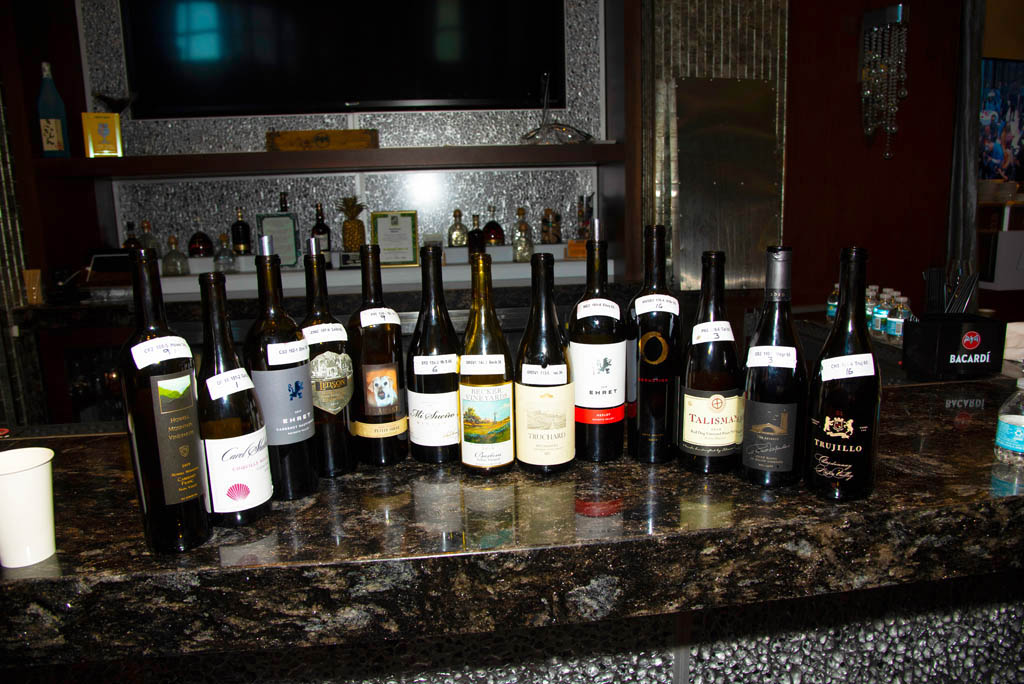
Best of Bottles
It is no small feat to organize a competition like this, and the American Fine Wine Competition, which was founded in 2007 by current President, Shari Gherman, and Monty and Sara Preiser, veteran wine writers, vintners, and publishers of The Preiser Key, The Most Comprehensive Guide to Napa Valley, has earned and proven itself as THE Gold Standard for exclusively American wine competitions, with this being its 16th year! I was honored and humbled to be invited to judge, and I must say that “People who like to wine are indeed the best people,” as judges rotated tables and panels over the three days, giving everyone an opportunity to meet the other judges, all of whom were very welcoming to me and several others for whom this was their first competition. I look forward to visiting some of these excellent wineries in person, writing about them, and returning to judge again. This is truly a service that the AFWC provides to the public—vetting and awarding wines, many of which are from well-known names, but also many from small boutique producers people have never heard of—some great values, and wines from many states, not just those you might expect like California, Oregon, and Washington. As noted above, this year’s Best of Show for Red is a Barbera from the Texas Hill Country outside of Austin! This year’s show included wines from famed appellations in California, Oregon, and Washington, as well as excellent wines from Michigan, New York, Ohio, Missouri, Kansas, Texas, New Mexico, and more!
Being recognized by the AFWC not only turns consumers onto excellent wines they’d likely have never tried, but it also has the ability to catapult a small winery that isn’t well-known outside of its local area into a household name, boosting sales and reputation! The AFWC raises the bar for consumers and affords access to a huge number and variety of wines, at all price points they might not have discovered otherwise. If you’re looking to up your game with wine, following the AFWC and our results, which come from an expertly vetted group of American wines helps consumers cut through the noise and get down to drinking the very best! I am honored to be able to do this work and be a part of this amazing process for an organization that is a total class act, and has raised over $1.1Million for charity since inception! On a final note, I want to raise my glass to the many fantastic wineries and winemakers whose products we were honored to evaluate at the AFWC, as well as to Shari Gherman, Monty and Sara Preiser (Co-Founders), Greg Miseyko (responsible for organizing flights and tabulating results), and the numerous volunteers and judges whose extraordinary efforts make the American Fine Wine Competition THE #1 exclusively American wine competition in the country!
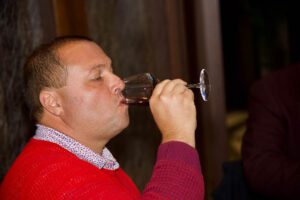
Fred Bollaci
Best of Red
BEST OF CLASS RED
Bordeaux Style Blend – O’Brien of Napa
Pinot Noir – Talisman of Sonoma
Syrah – Mi Sueno of Napa
Cabernet Franc – Howell Mountain of Napa
Red Blends of other than Bordeaux grapes – Carol Shelton of Sonoma
Cabernet Sauvignon – Ehret of Sonoma
Petite Sirah – St. Amant of Lodi
Barbara – Becker of Texas
Merlot – Ehret of Sonoma
Zinfandel – Ledson of Sonoma
BEST OF SHOW RED
Becker Barbera of Texas
Best of White
Chardonnay- Trujillo of Napa
Sauvignon Blanc- Robert Mondavi of Napa
BEST OF CLASS and SHOW WHITE
Truchard Roussanne of Napa
BEST OF SHOW SPARKLING
Domaine Carneros Le Reve of Napa
BEST DESSSERT
Prager Port of Napa
www.americanfinewinecompetition.com for all results.


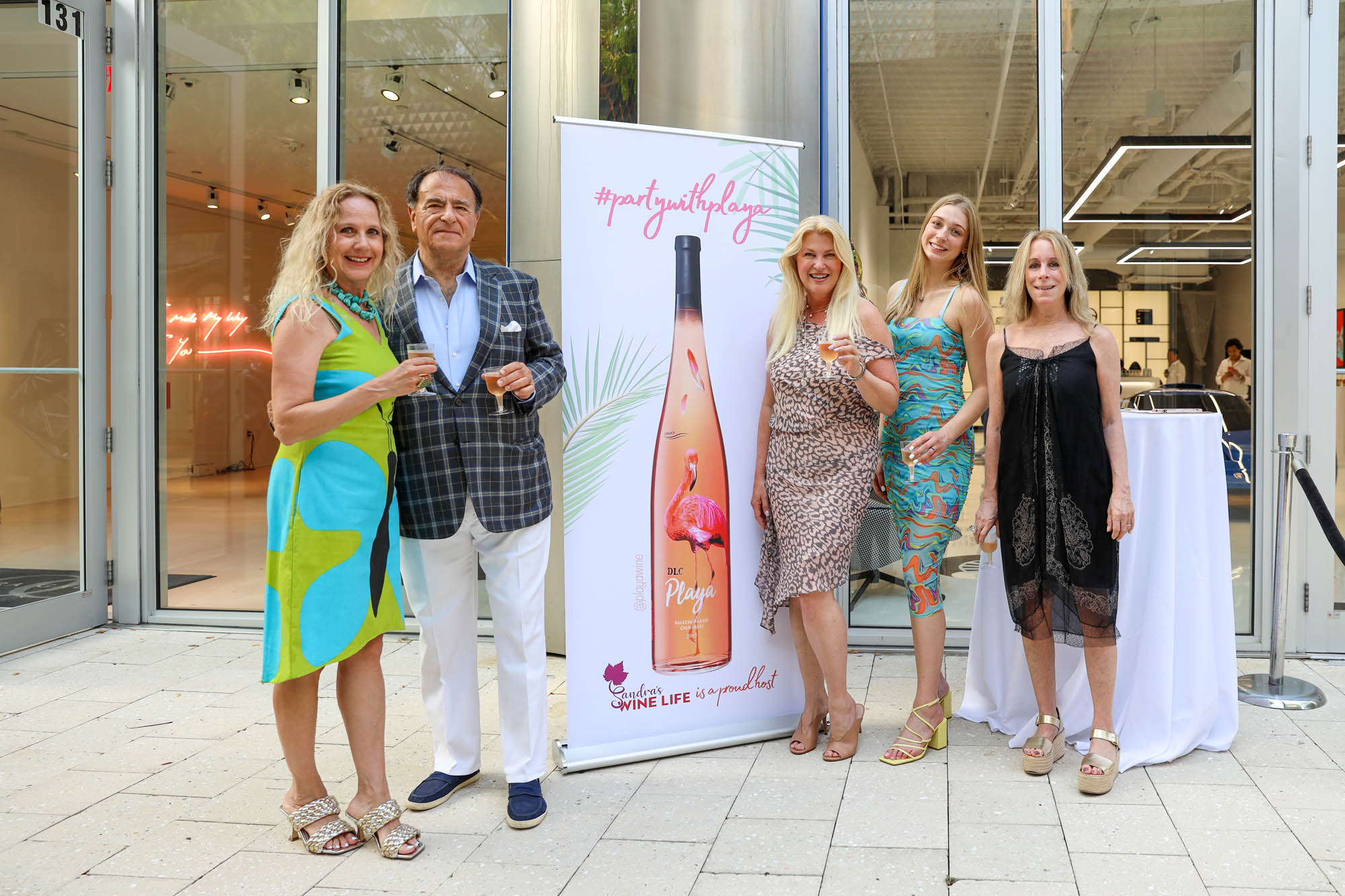
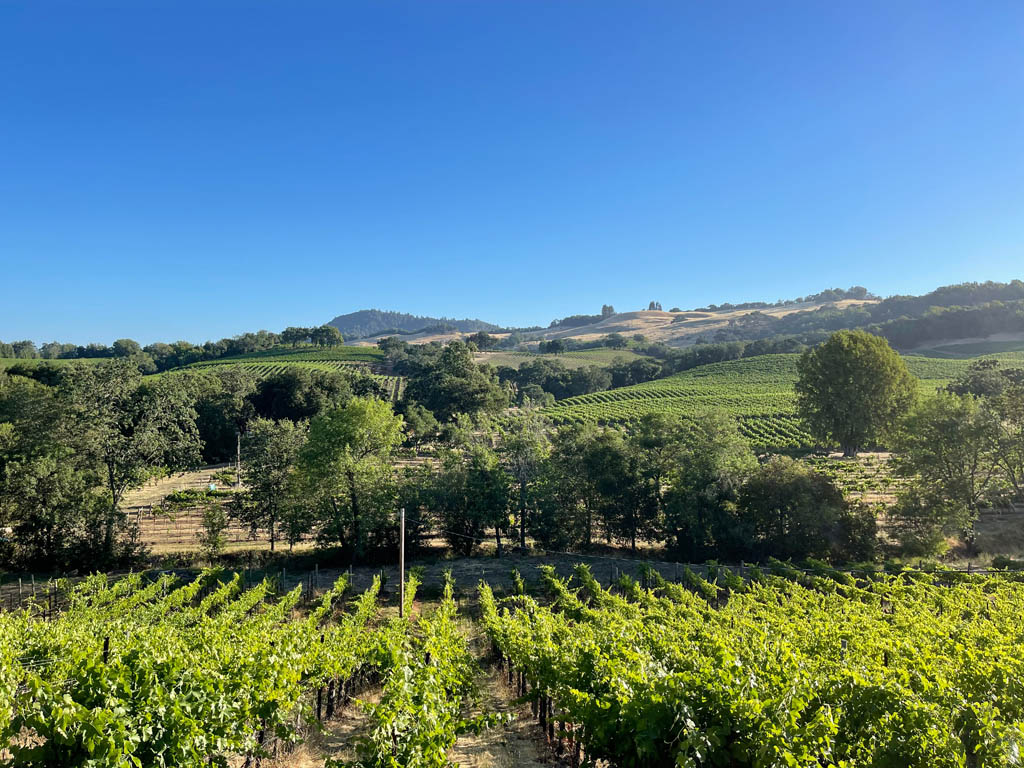
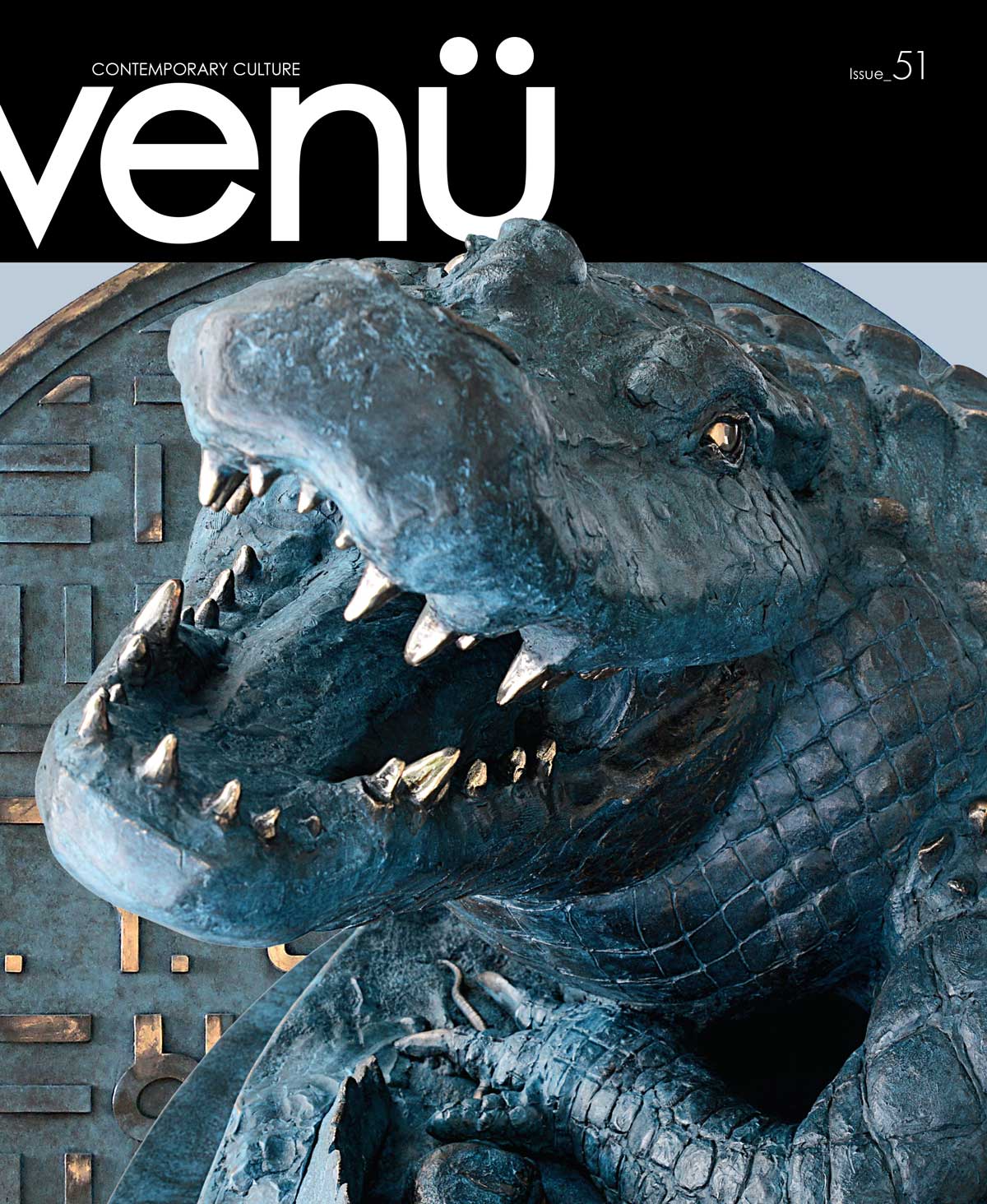
Leave a Reply